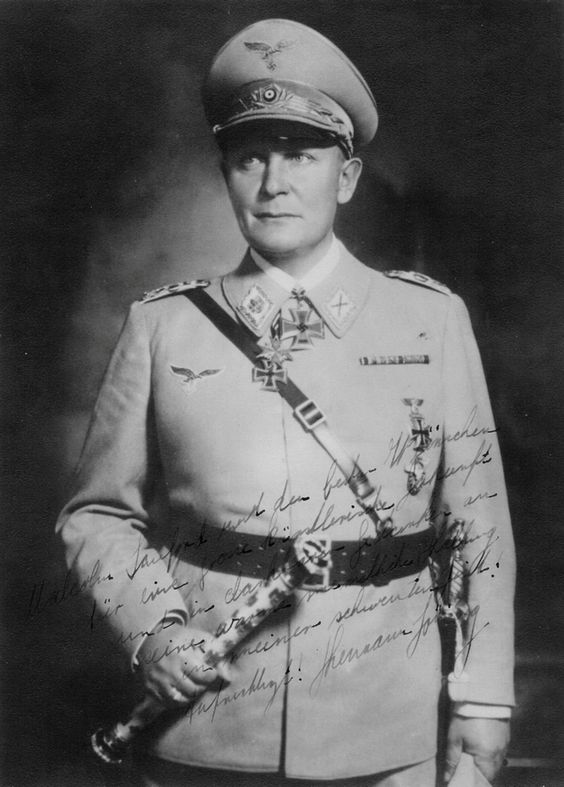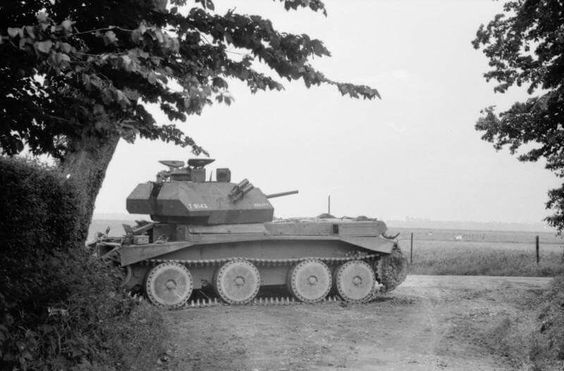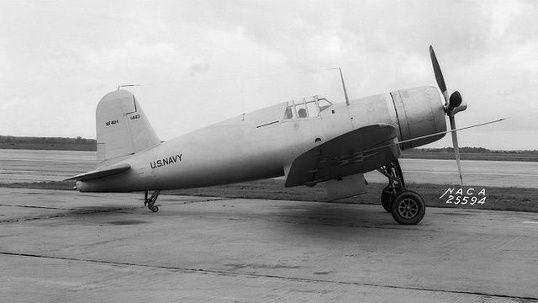Monday 29 July 1940
 |
| Spitfire pilots of No. 610 Squadron between sorties at "A" Flight dispersal at Hawkinge, 29 July 1940. |
Battle of Britain: Another invasion alert at 21:00 on 29 July 1940 brings the Home Fleet at Scapa Flow to readiness, but once again it is a false alarm.
The Luftwaffe continues its attacks on Channel ports and convoys. Danish 1264 ton freighter Gronland and 197-ton yacht Gulzar sink at Dover Harbour.
The Stukas also catch destroyer HMS Delight off Portland at 17:00 and sink it. This attack is based on Freya Radar operating 60 miles away. There are 12 deaths and 59 other casualties.
To solidify the defense of Dover, from which all destroyers have been withdrawn, the Royal Navy sinks 5183 special service vessel Umvotti as a blockship.
The Admiralty expands upon its decision to take destroyers out of Dover Harbour. Now, destroyers are forbidden from any operations during daylight hours in the eastern English Channel. Minesweepers remain in action at great risk to themselves.
The Luftwaffe continues its mine-laying around the Thames estuary and nearby ports after dark.
Overall, it is another poor day for the Luftwaffe, which loses 8 planes to the RAF's 3 fighters.
European Air Operations: RAF Bomber Command continues its daylight raids over Occupied Europe. This includes raids on barges being collected at Channel ports for a possible invasion and airfields in northwest Europe. The RAF is being aided in these raids by Free French airmen. Other targets of opportunity are infrastructure installations such as railway marshaling yards and oil installations.
Battle of the Atlantic: Otto Kretschmer in U-99 continues his rampage in the mid-Atlantic. He picks off independent 7336-ton British freighter Clan Menzies about 150 miles off of County Clare, Ireland. Kretchmer misses with a torpedo, then stalks the ship for five hours until finally maneuvering into firing position. There are 88 survivors, 6 crew perish.
British 1262 ton freighter Moidart hits a mine and sinks off Felixstowe, Suffolk. All 11 crew perish.
British 44 ton trawler Leach's Romance hits a mine and sinks 10 miles south of Kemptown, Brighton. All four crew perish.
British 5952 ton freighter Clan Monroe hits a mine near Harwich. She remains afloat with a broken back for a few days but sinks while in tow.
British 5601 ton freighter Ousebridge hits a mine in Queen's Channel on the entrance to Liverpool. It blows her bow off and breaks her back. There are two deaths.
British submarine HMS Sealion spots U-62 on the surface in the North Sea heading back to Bergen and shoots 3 torpedoes at it. The crew of the U-boat spots the British submarine, however, and evades the torpedoes. Sealion then surfaces and attacks with its deck gun, but U-62 dives and manages to escape.
British submarine HMS Triton sights an unidentified U-boat off Korsfjord, Norway heading out to sea but is unable to attack.
British submarine HMS Porpoise lays a minefield (FD.23) off of Norway, then heads south to the Bay of Biscay.
British corvette HMS La Malouine (K 46, Lt. Commander Ronald W. Keymer, is commissioned.
Battle of the Mediterranean: HMS Eagle, based at Alexandria, escorts a convoy in the eastern Mediterranean. Its Sea Gladiators shoot down an Italian SM.79 lurking in the vicinity.
Italian bombers raid Aden without much effect. Regia Aeronautica planes also attack Royal Navy ships north of Bardia but do not score any hits.
Malta is being bombed almost every day, and people have begun practically living in the larger shelters. Many of these underground chambers were created centuries ago by the Knights of Malta. During the day, there are two air raid alerts, but no bombs are dropped.
Battle of the Indian Ocean: The Royal Navy blockades Vichy French Madagascar.
German raider Atlantis rendezvouses with Kriegsmarine freighter Tirranna and takes on board ample fuel and other supplies.
War Crimes: The British Air Ministry justifies the fact that it has shot down four Luftwaffe Heinkel He 59 search and rescue planes that are clearly marked with the Red Cross symbol by stating that any plane that acts "suspiciously" is fair game. In point of fact, the RAF has been shooting down such planes while in the very act of rescuing downed crewmen in the Channel when there was nothing suspicious about them.
German Government: OKW Chief of Operations Colonel-General Alfred Jodl briefs top military personnel on Hitler's decision to attack the Soviet Union. "The collision with Bolshevism is bound to come. Better to have it now, when we are at the height of our military power," he says. The decision, of course, is not up for debate.
The timing given for the attack is spring 1941, which pretty much everyone believes will give the Wehrmacht plenty of time to settle matters with Great Britain. Eventually, the codename Operation Barbarossa will be given to this invasion.
While there are off-handed ruminations by some that the attack would occur as early as the fall of 1940, this is the first time a specific time frame has been officially established. In fact, while treated very matter-of-factly, this is the first real communication from Hitler to the Wehrmacht, aside from off-handed comments, that an attack on the USSR will occur at all. After this, the idea of an attack on the USSR will be an accepted, in fact almost obvious and inevitable, idea among the top military leadership.
Hitler is at the absolute peak of his popularity following the fall of France, and while many have misgivings about attacking the Soviet Union - with very good reason - it is impossible to oppose his next move absent some intervening event. Among the many who oppose the idea to one extent or another is Reichsmarschall Hermann Goering, but there really is nothing that he or anyone else can do within the chain of command once Hitler has made a decision.
The OKL (Kriegsmarine high command) issues a memo urging that Operation Sea Lion, the invasion of Great Britain, be postponed until 1941. The OKL does, however, state that an invasion is feasible and could succeed even in September 1940 as seems the most likely possible start date.
With Great Britain about to fall into its hands, the Germans set up an economic board to oversee the exploitation of the British industry after Operation Sea Lion succeeds.
Spanish/Portuguese Relations: The two governments sign the Iberian Pact.
Anglo/Romanian Relations: The Romanian government has recently nationalized a Dutch Royal Shell subsidiary. The British government formally protests via a diplomatic note.
German/Belgian Relations: Germany annexes Belgian provinces Eupen, Malmedy, and Moresnet. Speaking French/Flemish there now is banned. There is a large ethnic German population in this region, and many already tend to view themselves as German in nationality as well as by origin.
Vichy France: With trials scheduled for former Prime Minister Daladier and other "traitors," the Vichy government sets up a special Supreme Court to try former officials of the Third Republic. This becomes known as the Riom Trial.
Japan: One of the 9-12 British nationals (sources vary) imprisoned by the Japanese recently on spying and other charges (they claim), a Mr. Melville Cox, commits suicide at the police station.
China: The Nationalist government rejects a semi-serious Japanese peace offer which would assure Japanese hegemony in the region.
American Homefront: A poll in Life Magazine shows that 36% of the public thinks that Germany will beat Great Britain, versus 24% who see the reverse outcome. There is 70% support for a draft.
July 1940
July 1, 1940: Vichy France
July 2, 1940: Arandora Star
July 3, 1940: Operation Catapult at Mers El Kébir
July 4, 1940: Romania In Crisis
July 5, 1940: The Five Freedoms
July 6, 1940: Hitler's High Point
July 7 1940: Dakar And Ringo
July 8, 1940: Tea Rationing in England
July 9, 1940: Battle of Calabria
July 10, 1940: Battle of Britain Begins
July 11, 1940: "Nous, Philippe Petain"
July 12, 1940: Enter Laval
July 13, 1940: German Surface Raiders Attack!
July 14, 1940: Bastille/Mourning Day
July 15, 1940: Tallest Man Dies
July 16, 1940: Plans for Sea Lion
July 17, 1940: Burma Road Closed
July 18, 1940: FDR Runs Again
July 19, 1940: Last Appeal To Reason
July 20, 1940: First Night Fighter Victory
July 21, 1940: Soviets Absorb Baltic States
July 22, 1940: First RAF Night Fighter Victory
July 23, 1940: Invasion False Alarm
July 24, 1940: The Meknés Incident
July 25, 1940: Black Thursday for RAF
July 26, 1940: Capture The Duke?
July 27, 1940: What's Up, Doc?
July 28, 1940: Destroyers Pulled From Dover
July 29, 1940: Barbarossa On The Burner
July 30, 1940: Hitler Delays Sealion
July 31, 1940: Bloody Wednesday of Olkusz
2020
The Luftwaffe continues its attacks on Channel ports and convoys. Danish 1264 ton freighter Gronland and 197-ton yacht Gulzar sink at Dover Harbour.
The Stukas also catch destroyer HMS Delight off Portland at 17:00 and sink it. This attack is based on Freya Radar operating 60 miles away. There are 12 deaths and 59 other casualties.
To solidify the defense of Dover, from which all destroyers have been withdrawn, the Royal Navy sinks 5183 special service vessel Umvotti as a blockship.
The Admiralty expands upon its decision to take destroyers out of Dover Harbour. Now, destroyers are forbidden from any operations during daylight hours in the eastern English Channel. Minesweepers remain in action at great risk to themselves.
The Luftwaffe continues its mine-laying around the Thames estuary and nearby ports after dark.
Overall, it is another poor day for the Luftwaffe, which loses 8 planes to the RAF's 3 fighters.
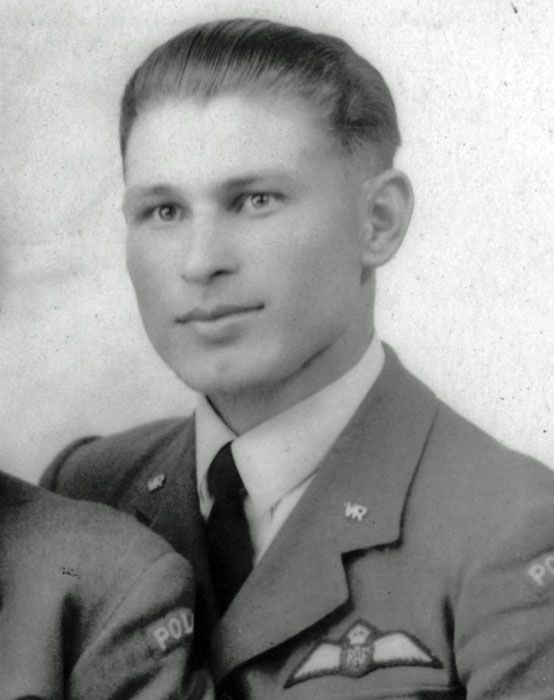 |
| P/O Kazimierz "Bonkin" Łukaszewicz takes his first familiarisation flight on 29 July 1940, 3 days after joining No 302 "Polish" Squadron. KIA 12 August 1940. |
Battle of the Atlantic: Otto Kretschmer in U-99 continues his rampage in the mid-Atlantic. He picks off independent 7336-ton British freighter Clan Menzies about 150 miles off of County Clare, Ireland. Kretchmer misses with a torpedo, then stalks the ship for five hours until finally maneuvering into firing position. There are 88 survivors, 6 crew perish.
British 1262 ton freighter Moidart hits a mine and sinks off Felixstowe, Suffolk. All 11 crew perish.
British 44 ton trawler Leach's Romance hits a mine and sinks 10 miles south of Kemptown, Brighton. All four crew perish.
British 5952 ton freighter Clan Monroe hits a mine near Harwich. She remains afloat with a broken back for a few days but sinks while in tow.
British 5601 ton freighter Ousebridge hits a mine in Queen's Channel on the entrance to Liverpool. It blows her bow off and breaks her back. There are two deaths.
British submarine HMS Sealion spots U-62 on the surface in the North Sea heading back to Bergen and shoots 3 torpedoes at it. The crew of the U-boat spots the British submarine, however, and evades the torpedoes. Sealion then surfaces and attacks with its deck gun, but U-62 dives and manages to escape.
British submarine HMS Triton sights an unidentified U-boat off Korsfjord, Norway heading out to sea but is unable to attack.
British submarine HMS Porpoise lays a minefield (FD.23) off of Norway, then heads south to the Bay of Biscay.
British corvette HMS La Malouine (K 46, Lt. Commander Ronald W. Keymer, is commissioned.
Battle of the Mediterranean: HMS Eagle, based at Alexandria, escorts a convoy in the eastern Mediterranean. Its Sea Gladiators shoot down an Italian SM.79 lurking in the vicinity.
Italian bombers raid Aden without much effect. Regia Aeronautica planes also attack Royal Navy ships north of Bardia but do not score any hits.
Malta is being bombed almost every day, and people have begun practically living in the larger shelters. Many of these underground chambers were created centuries ago by the Knights of Malta. During the day, there are two air raid alerts, but no bombs are dropped.
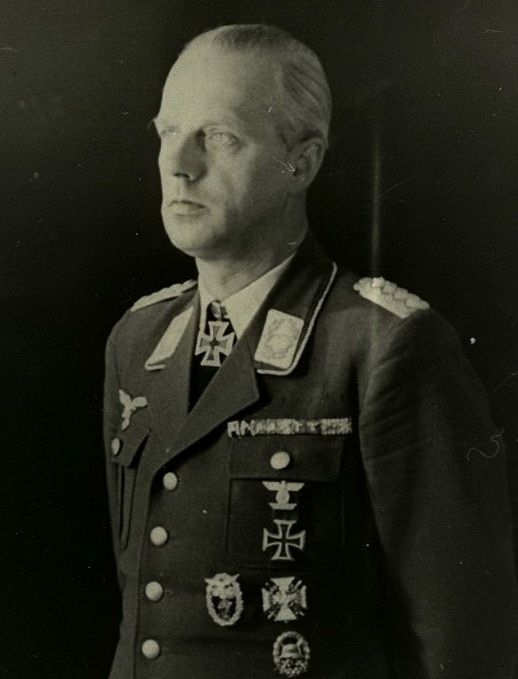 |
| Walter von Hippel receives the Knight's Cross of the Iron Cross on 29 July 1940 for services as Oberstleutnant and commander of Flak-Regiment 102. |
German raider Atlantis rendezvouses with Kriegsmarine freighter Tirranna and takes on board ample fuel and other supplies.
German Government: OKW Chief of Operations Colonel-General Alfred Jodl briefs top military personnel on Hitler's decision to attack the Soviet Union. "The collision with Bolshevism is bound to come. Better to have it now, when we are at the height of our military power," he says. The decision, of course, is not up for debate.
The timing given for the attack is spring 1941, which pretty much everyone believes will give the Wehrmacht plenty of time to settle matters with Great Britain. Eventually, the codename Operation Barbarossa will be given to this invasion.
While there are off-handed ruminations by some that the attack would occur as early as the fall of 1940, this is the first time a specific time frame has been officially established. In fact, while treated very matter-of-factly, this is the first real communication from Hitler to the Wehrmacht, aside from off-handed comments, that an attack on the USSR will occur at all. After this, the idea of an attack on the USSR will be an accepted, in fact almost obvious and inevitable, idea among the top military leadership.
Hitler is at the absolute peak of his popularity following the fall of France, and while many have misgivings about attacking the Soviet Union - with very good reason - it is impossible to oppose his next move absent some intervening event. Among the many who oppose the idea to one extent or another is Reichsmarschall Hermann Goering, but there really is nothing that he or anyone else can do within the chain of command once Hitler has made a decision.
The OKL (Kriegsmarine high command) issues a memo urging that Operation Sea Lion, the invasion of Great Britain, be postponed until 1941. The OKL does, however, state that an invasion is feasible and could succeed even in September 1940 as seems the most likely possible start date.
With Great Britain about to fall into its hands, the Germans set up an economic board to oversee the exploitation of the British industry after Operation Sea Lion succeeds.
 |
| George Marshall, Time Magazine, 29 July 1940. |
Anglo/Romanian Relations: The Romanian government has recently nationalized a Dutch Royal Shell subsidiary. The British government formally protests via a diplomatic note.
German/Belgian Relations: Germany annexes Belgian provinces Eupen, Malmedy, and Moresnet. Speaking French/Flemish there now is banned. There is a large ethnic German population in this region, and many already tend to view themselves as German in nationality as well as by origin.
Vichy France: With trials scheduled for former Prime Minister Daladier and other "traitors," the Vichy government sets up a special Supreme Court to try former officials of the Third Republic. This becomes known as the Riom Trial.
Japan: One of the 9-12 British nationals (sources vary) imprisoned by the Japanese recently on spying and other charges (they claim), a Mr. Melville Cox, commits suicide at the police station.
China: The Nationalist government rejects a semi-serious Japanese peace offer which would assure Japanese hegemony in the region.
American Homefront: A poll in Life Magazine shows that 36% of the public thinks that Germany will beat Great Britain, versus 24% who see the reverse outcome. There is 70% support for a draft.
 |
| "Girl Lifeguard," Life Magazine, 29 July 1940. |
July 1940
July 1, 1940: Vichy France
July 2, 1940: Arandora Star
July 3, 1940: Operation Catapult at Mers El Kébir
July 4, 1940: Romania In Crisis
July 5, 1940: The Five Freedoms
July 6, 1940: Hitler's High Point
July 7 1940: Dakar And Ringo
July 8, 1940: Tea Rationing in England
July 9, 1940: Battle of Calabria
July 10, 1940: Battle of Britain Begins
July 11, 1940: "Nous, Philippe Petain"
July 12, 1940: Enter Laval
July 13, 1940: German Surface Raiders Attack!
July 14, 1940: Bastille/Mourning Day
July 15, 1940: Tallest Man Dies
July 16, 1940: Plans for Sea Lion
July 17, 1940: Burma Road Closed
July 18, 1940: FDR Runs Again
July 19, 1940: Last Appeal To Reason
July 20, 1940: First Night Fighter Victory
July 21, 1940: Soviets Absorb Baltic States
July 22, 1940: First RAF Night Fighter Victory
July 23, 1940: Invasion False Alarm
July 24, 1940: The Meknés Incident
July 25, 1940: Black Thursday for RAF
July 26, 1940: Capture The Duke?
July 27, 1940: What's Up, Doc?
July 28, 1940: Destroyers Pulled From Dover
July 29, 1940: Barbarossa On The Burner
July 30, 1940: Hitler Delays Sealion
July 31, 1940: Bloody Wednesday of Olkusz
2020



